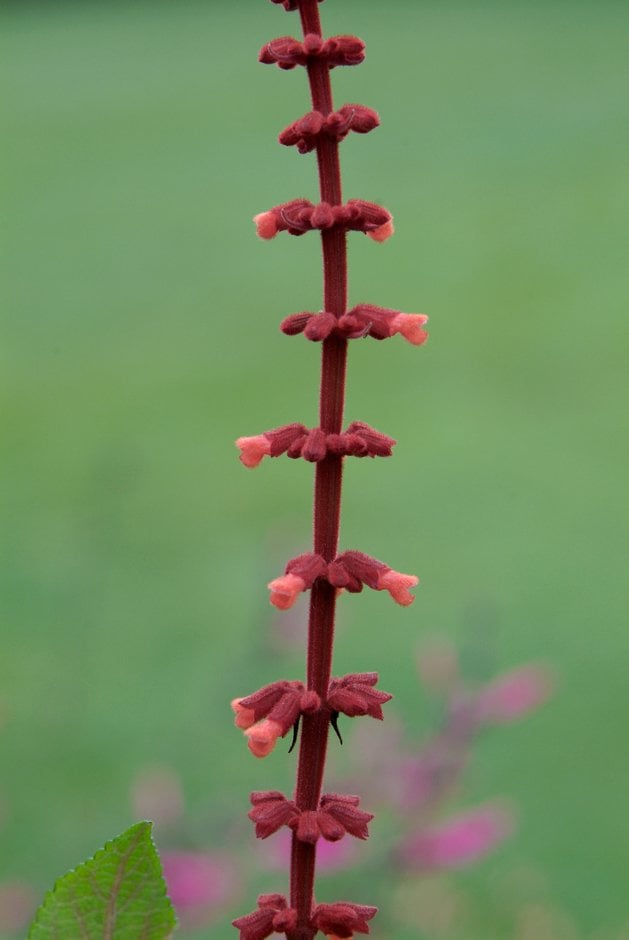Salvia confertiflora
Sabra spike sage
A tender, woody-based perennial to 1.2m tall, with scalloped yellow-green leaves to 20cm long, strongly scented when crushed, and slender spikes of small scarlet-orange flowers with deep red calyces, in late summer and autumn
Size
Ultimate height
1–1.5 metresTime to ultimate height
2–5 yearsUltimate spread
0.1–0.5 metresGrowing conditions
Moisture
Well–drainedpH
Acid, Alkaline, NeutralColour & scent
| Stem | Flower | Foliage | Fruit | |
| Spring | Green | |||
|---|---|---|---|---|
| Summer | Red Orange | Green | ||
| Autumn | Red Orange | Green | ||
| Winter |
Position
- Full sun
Aspect
South–facing
Exposure
Sheltered Hardiness
H2Botanical details
- Family
- Lamiaceae
- Native to GB / Ireland
- No
- Foliage
- Deciduous
- Habit
- Bushy
- Genus
Salvia can be annuals, biennials, herbaceous or evergreen perennials, or shrubs. They have paired, simple or pinnately lobed, often aromatic leaves and 2-lipped flowers in whorls, forming simple or branched spikes or racemes
- Name status
Correct
- Plant range
- Brazil
How to grow
Cultivation
Under glass grow in well-drained, peat-free potting compost in full light with shade from hot sun; can be moved outdoors during the summer months. See our video How to care for tender salvia for more advice
Propagation
Propagate by seed in containers in a cold frame in spring. Propagate by softwood cuttings in spring or early summer or semi-ripe cuttings in late summer or autumn with bottom heat
Suggested planting locations and garden types
- Coastal
- Patio and container plants
- City and courtyard gardens
- Cottage and informal garden
- Gravel garden
- Sub-tropical
- Wildlife gardens
- Wall side borders
- Flower borders and beds
- Bedding
- Conservatory and greenhouse
Pruning
Cut back spent flower spikes to prolong flowering
Pests
May be susceptible to aphids, glasshouse red spider mite, glasshouse whitefly; outdoors may be attacked by slugs and snails, capsid bug, rosemary beetle and leafhoppers
Diseases
May be susceptible to honey fungus (rarely), powdery mildews, verticillium wilt and foot and root rots
Get involved
The Royal Horticultural Society is the UK’s leading gardening charity. We aim to enrich everyone’s life through plants, and make the UK a greener and more beautiful place.
